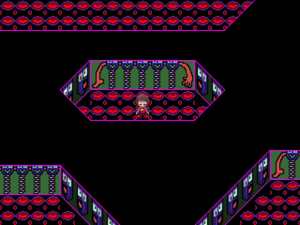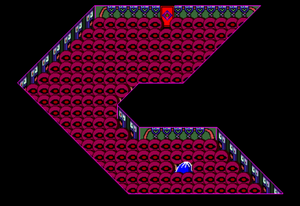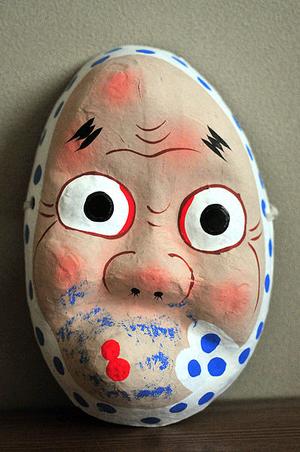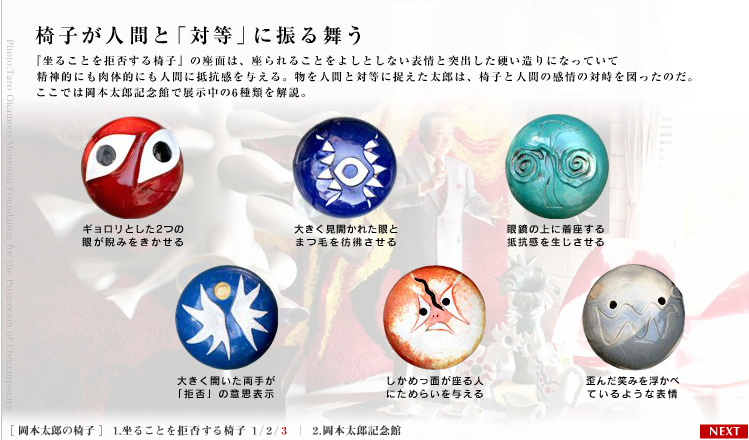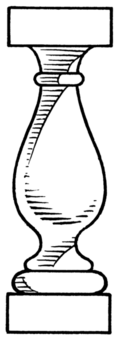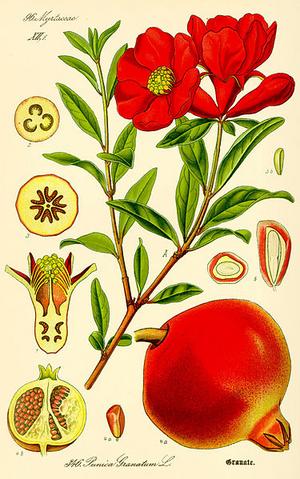>Mt.kiki No edit summary |
>Mt.kiki No edit summary |
||
| Line 183: | Line 183: | ||
[[File:Kyukyu.png|link=http://yumenikki.wikia.com/wiki/KyuuKyuu-kun|frame|left|A "red" brat, a "yellow" beast, the "blue" favorable realms of bellicose spirits.If these 3 colors are mixed, it will be said that it becomes infernal "black". ]] | [[File:Kyukyu.png|link=http://yumenikki.wikia.com/wiki/KyuuKyuu-kun|frame|left|A "red" brat, a "yellow" beast, the "blue" favorable realms of bellicose spirits.If these 3 colors are mixed, it will be said that it becomes infernal "black". ]] | ||
| Line 189: | Line 217: | ||
==[[KyuuKyuu-kun]]([http://en.wikipedia.org/wiki/Baluster Baluster])== | ==[[KyuuKyuu-kun]]([http://en.wikipedia.org/wiki/Baluster Baluster])== | ||
A '''baluster''' — also called '''spindle''' or '''stair stick''' — is a moulded shaft, square or of [http://en.wikipedia.org/wiki/Lathe <u>lathe</u>]-turned form, one of various forms of [http://en.wikipedia.org/wiki/Spindle_(furniture) <u>spindle in woodwork</u>], made of stone or wood and sometimes of metal,<sup class="reference" id="cite_ref-1">[http://en.wikipedia.org/wiki/Baluster#cite_note-1 <u>[1 | A '''baluster''' — also called '''spindle''' or '''stair stick''' — is a moulded shaft, square or of [http://en.wikipedia.org/wiki/Lathe <u>lathe</u>]-turned form, one of various forms of [http://en.wikipedia.org/wiki/Spindle_(furniture) <u>spindle in woodwork</u>], made of stone or wood and sometimes of metal,<sup class="reference" id="cite_ref-1">[http://en.wikipedia.org/wiki/Baluster#cite_note-1 <u>[1</u>]]</sup> standing on a unifying footing, and supporting the [http://en.wikipedia.org/wiki/Coping_(architecture) <u>coping</u>] of a [http://en.wikipedia.org/wiki/Parapet <u>parapet</u>] or the [http://en.wikipedia.org/wiki/Handrail <u>handrail</u>] of a [http://en.wikipedia.org/wiki/Stairway <u>staircase</u>]. Multiplied in this way, they form a '''balustrade'''.<sup class="reference" id="cite_ref-2">[http://en.wikipedia.org/wiki/Baluster#cite_note-2 <u>[2</u>]]</sup> Individually, a '''baluster shaft''' may describe the turned form taken by a brass or silver candlestick, an upright furniture support, or the stem of a brass chandelier, etc. | ||
[[File:Illustration_Punica_granatum.jpg|thumb|left|KyuuKyuu-kun looks Pomegranate color.]] | [[File:Illustration_Punica_granatum.jpg|thumb|left|KyuuKyuu-kun looks Pomegranate color.]] | ||
[[Category:Name]] | [[Category:Name]] | ||
Revision as of 06:21, 26 February 2013
Number World(The Evil Eye Door)
3 神話・伝説の中の隻眼(3 Sekigan in the legend, myth) 隻眼(せきがん)もしくは独眼(どくがん)とは、片側の目そのものや視力を失った身体障害の状態をいう。
隻眼(seki-gan) or 独眼(doku-gan) is, refers to a state of disability that has lost sight of the eye itself and one side.
3.1 形態(3.1 Form)
隻眼は、字義的には本来二つあるべき目のうちの片方が失われたか、または存在しない左右非対称な形象であるが、一部においては顔の真ん中に(単眼症のように)一つだけ目が存在すると表現されることもある(キュクロープスなど)。
Sekigan, which is a shape asymmetrical non-existent one of the eye should be two original is lost or is literally (as in cyclopia) in some one in the middle of the face eyes may be expressed only exists (such as Cyclops).
3.3 起源(3.3 Origin)
ケルト神話の神ルーは戦時中片目だけを開き(これは英雄クー・フーリンも同じ。またルーの祖父は片目が邪眼だった)、一本脚で戦士たちを鼓舞したが、ヌァザは戦争中片腕を切断された。ケルトの事例については邪眼との関連が強いことから、戦闘時の呪術に関係するものだという説も提出されている (Jacqueline Borsje, 'The Evil Eye' in early Irish literature and law) 。
(One eye was evil eyes this grandfather Lou is also. Same Khoo Fuling hero), but to inspire warriors in leg one, Lou gods Celtic Nu~aza during the war only open one eye during the war I was cut off an arm. Association with the evil eye from stronger, have also been submitted relating to the theory that something magic in combat for the case of Celtic (Jacqueline Borsje, 'The Evil Eye' in early Irish literature and law).
北欧神話が所属するインド・ヨーロッパ語族の伝承については、ジョルジュ・デュメジルが彼の三機能仮説における第一機能との関連を主張した。明確な理由は不明だが、第一機能(呪術的主権・司法的主権の二項対立がある)のうち一方は片目がなく、もう一方は片腕がない、というものである。
For Indo-European tradition that belongs to Norse mythology, Georges Dumezil has claimed the first function in the context of his three feature hypothesis. Obvious reason is unknown, but is one of those (there is a dichotomy of sovereignty and judicial sovereignty magical) function does not have a first one eye, one that there is no other arm.
つまり隻腕ならびに一本足が、この場合では隻眼、隻腕の組み合わせになっている。たとえばオーディンは片目がないが、テュールは片腕がない(フェンリル狼に食いちぎられた)。
One leg, but in this case is a combination Sekigan, namely the one-armed and one-armed. Odin has one eye is not, for example, is Te~yuru (which was bitten off by the wolf Fenrir) there is no arm.
Number World(Chuck Man)
3.3 起源(3.3 Origin)
ほかにも隻眼は男根の象徴であるとする説(民俗学者アラン・ダンデスのWet and Dry,the Evil Eyeや堀田吉雄『山の神の研究』など)、太陽の象徴であるとする説(古典学者アーサー・バーナード・クックのZeusvol.2やその追随者たち)など多くの仮説が存在するが、いずれも決定的なものではない。
In addition to the theory (such as Wet and Dry Alan Dandesu folklorist, "Study of the mountain god" Yoshio Hotta and the Evil Eye) theory that is a symbol of phallic, and is a symbol of the sun Sekigan Arthur classical scholar (hypothesis, and much more) and that his followers Zeusvol.2 Bernard Cook exists but is not critical either.
Number World(Crick in the Neck)
3.3 起源(3.3 Origin)
学術的な観点からもいくつかの説が唱えられている。日本だけに限れば、柳田國男は、Several theories have been cast from an academic point of view. Be limited to Japan, "Kunio Yanagida",
もともと神に捧げるべき生け贄の人間が逃亡しないように片目(と片脚)を傷つけていたのが神格と同一視されるようになったのが原因であると考えた(『一つ目小僧その他』)。
the cause had been hurt in one eye (one leg) and have that came to be identified with the deity of human sacrifice to be dedicated to God originally to prevent the escape it was considered to be (and so "one-eyed boys")
The Stabbing Room(Mount Fuji)
Mount Fuji (富士山 Fuji-san?, IPA: [ɸɯꜜdʑisaɴ] ([1] listen)), located on Honshu Island, is the highest mountain in Japan at 3,776.24 m (12,389 ft).[1] An active stratovolcano[5][6] that last erupted in 1707–08, Mount Fuji lies about 100 kilometres (62 mi) south-west of Tokyo, and can be seen from there on a clear day. Mount Fuji's exceptionally symmetrical cone, which is snow-capped several months a year, is a well-known symbol of Japan and it is frequently depicted in art and photographs, as well as visited by sightseers and climbers. It is one of Japan's "Three Holy Mountains" (三霊山 Sanreizan?) along with Mount Tate and Mount Haku; it is a Special Place of Scenic Beauty, a Historic Site, and has been submitted for future inscription on the World Heritage List as a Cultural (rather than Natural) Site.[7][8][9]
Mount Fuji(Hatsuyume)
2.2 一富士二鷹三茄子 Although this superstition is well known in Japan, often memorized in the form Ichi-Fuji, Ni-Taka, San-Nasubi (一富士、二鷹、三茄子; 1. Fuji, 2. Hawk, 3. Eggplant), the continuation of the list is not as well known. The continuation is Yon-Sen, Go-Tabako, Roku-Zatō (四扇、五煙草、六座頭; 4. Fan, 5. Tobacco, 6. Blind acupressurer). The origins of this trio are less well known, and it is unclear whether they were added after the original three or whether the list of six originated at the same time.
Mount Fuji(LSD (video game))
Developer(s) - OutSide Directors Company
Platform(s) - PlayStation, PSN
Release date(s) - JP October 22, 1998
『LSD (video game) - The Opening Movie』 #0:00~0:38
http://en.wikipedia.org/wiki/LSD_(video_game)
The Stabbing Room(Hyottoko)
空調用ダクトのひょっとこ
冷暖房に使用するダクトの部材において、主管から分岐する場合に抵抗を減らすために風の流れる方向に広がった台形状の取り出し管のことを「ひょっとこ」と呼称する。吹き出し口に取り出す場合に、天井開口から作業できるように、内側から折り倒せるように加工した取り出し管を「内ひょっとこ」と呼称する。ともに取り出し部分にあたる鉄板がひょっとこの面の口のように飛び出していることからの呼称である。
Hyottoko of air-conditioning duct
Referred to as "Hyottoko" that removal of trapezoidal tube in the duct member to be used for air conditioning and extends in the direction of flow of air in order to reduce the resistance when branching from the main pipe. Referred to as "Hyottoko in the" if you take out a pickup tube to the outlet, so that you can work from the ceiling opening, worked from the inside to defeat fold. It is referred that protrudes from the steel plate so that the portion corresponding to the mouth of the surface of the Hyottoko removed together.
Wheelies(Number World)(Tarō Okamoto)
Tarō Okamoto (岡本 太郎 Okamoto Tarō?, February 26, 1911 – January 7, 1996) was a Japanese artist noted for his abstract and avant-garde paintings and sculpture.
Okamoto Tarō "Chair refused to sit" (Ware, 1963)
http://media.excite.co.jp/ism/097/01okamoto1.html
椅子が人間と「対等」に振る舞う
Chair act on an equal footing with man
『坐ることを拒否する椅子』の座面は、座られることをよしとしない表情と突出した硬い造りになっていて精神的にも肉体的にも人間に抵抗感を与える。
Bearing surface of the "chair refused to sit" gives a sense of resistance to the human both mentally and physically they become brick hard that protrudes expression and does not good to be sitting.
物を人間と対等に捉えた太郎は、椅子と人間の感情の対峙を図ったのだ。
ここでは岡本太郎記念館で展示中の6種類を解説。
Taro was caught on an equal footing with human things, he was the face of human emotions and Haka~tsu chair. Here describes the six types of Taro Okamoto Memorial Museum Exhibition.
1、ギョロリとした2つの 2、大きく見開かれた眼と 3、眼鏡の上に着座する
眼が睨みをきかせる まつ毛を彷彿させる 抵抗感を生じさせる
1.Secret peeled,Two eyes use a glare 2.Eyelashes & eye greatly opened 3.Bad feel which sits down on glasses.
4、大きく開いた両手が 5、しかめっ面が座る人 6、歪んだ笑みを浮かべ
「拒否」の意思表示 にためらいを与える ているような表情
4.Both hands open,Intention to "refuse" 5.Hesitate to give the man who sit grimace 6.Expression of scornful laugh
The Stairway(Diyu)
東アジアの仏教では、地獄の色は道教的に、あるいはその影響を受けた陰陽道的に「黒」で表す。
At the Buddhism of East Asia, an infernal color is expressed with "black" to a Taoism target or the Yin Yang philosophy target which was subject to the influence.
餓鬼は赤、畜生は黄、修羅は青、この三色を混ぜると地獄の黒になると言われる。
A red brat, a yellow beast, the blue favorable realms of bellicose spirits.
If these 3 colors are mixed, it will be said that it becomes infernal black.
また、節分で追われる赤鬼、黄鬼、青鬼はここから来ている。
Moreover, the red devil, yellow devil, and the blue devil who are ousted on the eve of the beginning of spring are coming from here.
KyuuKyuu-kun(Baluster)
A baluster — also called spindle or stair stick — is a moulded shaft, square or of lathe-turned form, one of various forms of spindle in woodwork, made of stone or wood and sometimes of metal,[1] standing on a unifying footing, and supporting the coping of a parapet or the handrail of a staircase. Multiplied in this way, they form a balustrade.[2] Individually, a baluster shaft may describe the turned form taken by a brass or silver candlestick, an upright furniture support, or the stem of a brass chandelier, etc.




